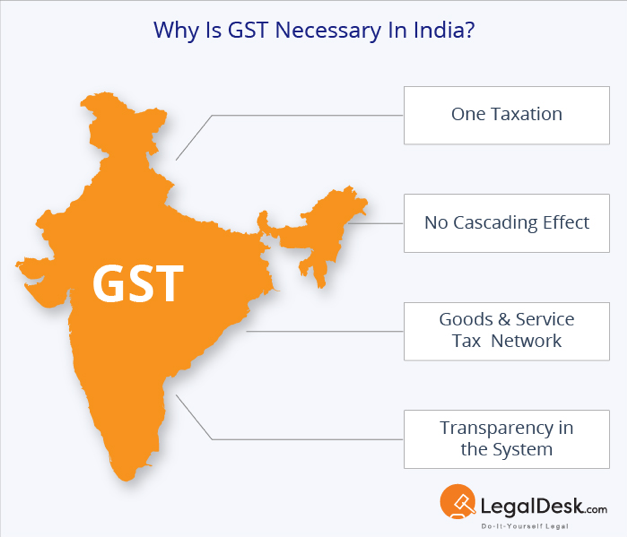Goods And Services Tax
GST reform is a revolutionary form of taxation which was introduced in India on the
1st of July 2017. The key motive of the finance department behind getting rid of the
old tax regime was to eliminate many complicated taxes which were imposed on goods
in
India and replace them with a simple tax called Goods and Services Tax. This tax is
imposed on all goods and services produced and sold in India making India a unified
tax economy. The objective of this article is to answer some frequently asked
questions
about GST in India.

Slabs for Goods and Services Tax Rate
Probably the most distinct feature of new GST of India is that it has four different
slabs that start from 5 percent to 28 percent GST. And the way the tax rate is
determined
is that the daily use goods such as food items are kept at the lowest GST slab that
is
5 percent. Similarly, value-added products such as electronics, automobiles are kept
at
a higher GST slab. The highest tax slab which is 28 percent is reserved for luxury
goods
such as luxury watches or luxury cars. Categorizing goods in these 4 tax slabs helps
in
getting rid of a large number of complicated taxes. You can find additional details
about
different GST slabs by clicking this link:
https://www.wishfin.com/gst-tax-rates-list/goods-and-services-tax/
Which Goods aren’t taxed Under GST?
Government of India has excluded some goods from the Goods and Services Tax slabs.
These
goods include petroleum products, sin goods such as alcohol, and electricity. These
goods
are taxed on the previous taxation methods by governments of various states of
India.
Other than these three commodities there is an additional special tax rate of 0.25
percent
on gems and precious stones. Moreover gold also has a special tax of 3% percent
which is
also not included in GST slabs.
Who Regulates GST in India?
There is a special council that is responsible for implementing this tax and it
contains
all the finance ministers of the federal government along with all the states. Any
amendments or changes in rules of GST are carried out by this special council making
sure that all the states of India have their representation in the decision-making
process.
What are the advantages of GST?
Well obviously since this tax reform was brought forward to simplify tax system it
has
its advantages over the previous tax system.
-
Categorization of Products and services:
Before the new tax reform was introduced it was a difficult task to identify and classify goods into various categories because there were no fixed classifications defined by the government. But thanks to the new tax reform and good classification various goods can be identified using an eight-digit identification number according to international standards. -
Uniform taxation for all states:
Another key advantage of GST is that everyone in India no matter which state they are from pays the same tax when buying a specific good. -
Ease of doing business:
This tax reform gives business owners and companies the ease of calculating the best prices for their product because they can determine at what rate their product or service is going to be taxed.